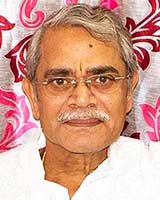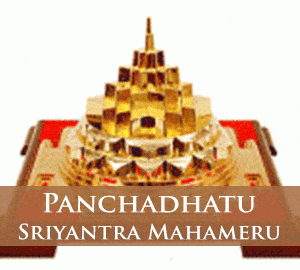Sloka 29 : If a planet be in conjunction with another planet, reduce the period contributed by the planet by half. If the planet be in depression or combustion, then also should a reduction of the period by half be made.
Sloka 30 : If a planet be posited in an inimical house, a reduction by a third should be effected. If a planet occupy any house in the visible half of the horizon, similar reduction should be made. For a planet vanquished in planetary war or occupying a position within the Pata range of the Sun and the Moon, a reduction by a third should be made.
Sloka 31 : When several reduction crop up in the case of a single planet, only one, and that the greatest, should be made. All the figures should then be totalled up and multiplied by 324.
Sloka 32 : The product should be divided by 365. The quotient will be the correct rectified Ayus contributed severally by the planets, and may be shown in years, months, days, etc., and will be their Dasa periods.
Sloka 33 : Thus should the Dasa periods of each of the several planets be computed separately. The method of computing the Dasa periods by the Ashtakavarga process is the best of all.
Sloka 34-35 : In the Sarvashtakavarga the figures indicating the number of benefic dots in the 12 houses reckoned from.
(1) the Sun are 3, 3, 3, 3, 2, 3, 4, 5, 3, 5, 7, 2 = 43
(2) the Moon are 2, 3, 5, 2, 2, 5, 2, 2, 2, 3, 7, 1 = 36
(3) Mars are 4, 5, 3, 5, 2, 3, 4, 4, 4, 6, 7, 2 = 49
(4) Mercury are 3, 1, 5, 2, 6, 6, 1, 2, 5, 5, 7, 3 = 46
(5) Jupiter are 2, 2, 1, 2, 3, 4, 2, 4, 2, 4, 7, 3 = 36
(6) Venus are 2, 3, 3, 3, 4, 4, 2, 3, 4, 3, 6, 3 = 40
(7) Saturn are 3, 2, 4, 4, 4, 3, 3, 4, 4, 4, 6, 1 = 42
(8) Lagna are 5, 3, 5, 5, 2, 6, 1, 2, 2, 6, 7, 1 = 45
Total Sarvashtakavarga figure = 337
Sloka 36 : The Ashtakavarga system is declared to be effective in all undertakings. There is no other way to determine the power of the influence arising at the time-whether good or bad.
Sloka 17 : Signs containing 30 or more benefic dots will always prove benefic. Those containing dot’s between 25 and 30 will be middling. Houses where the figure is lower than 25 will cause sorrow or misery.
Sloka 38 : He in whose nativity the number of benefic dots in the 11th house of the Sarvashtakavarga exceeds that of the 10th house and the figure in the 12th less than that of the 11th, and the figure in the Lagna more than that of the 12th, will be happy and wealthy.
Sloka 39 : Examine the figures in the several houses from the Lagna to the 12th inclusive. In whichever Bhavas there are more figures, transits over these houses will produce good results. Where the figures are less, the effect will be untoward.
Sloka 40 : The remarks made above in the previous Sloka apply only to houses other than the 6th, 8th and 12th. During the transits through the best signs (i e., the signs containing greater number of benefic dots, barring the Dusthanas all things auspicious should be done.
Sloka 41 : Add the .figures in the houses reckoned from the Lagna to Saturn both inclusive. Multiply the sum thus obtained by 7 and divide the product by 27.
Sloka 42 : In the year indicated by the quotient, the native will suffer calamity or disease. The same process should be gone through with respect to the houses reckoned from Saturn to the Lagna. Similar remarks apply in the case of Mars and Rahu, and the years indicating similar untoward events, ascertained in the same manner.
Sloka 43 : ln the year indicated by the figure obtained by (1) adding the figures (of benefic dots) in the houses occupied by benefic planets and (2) then multiplying the same by 7 and (3) dividing the result by 27 should be year indicating anything auspicious be intimated. On such on occasion, one will without doubt, obtain issue, wealth, happiness, etc.
Sloka 44 : I have thus described here in a brief manner the effects due to Ashtakavarga. The same have been treated in greater detail in other works by intelligent men versed in the science.
Thus ends the 24th Adhyaya on “the Asthakavarga effects as stated in Hora Sara” in the work Phaladeepika composed by Mantreswara.











